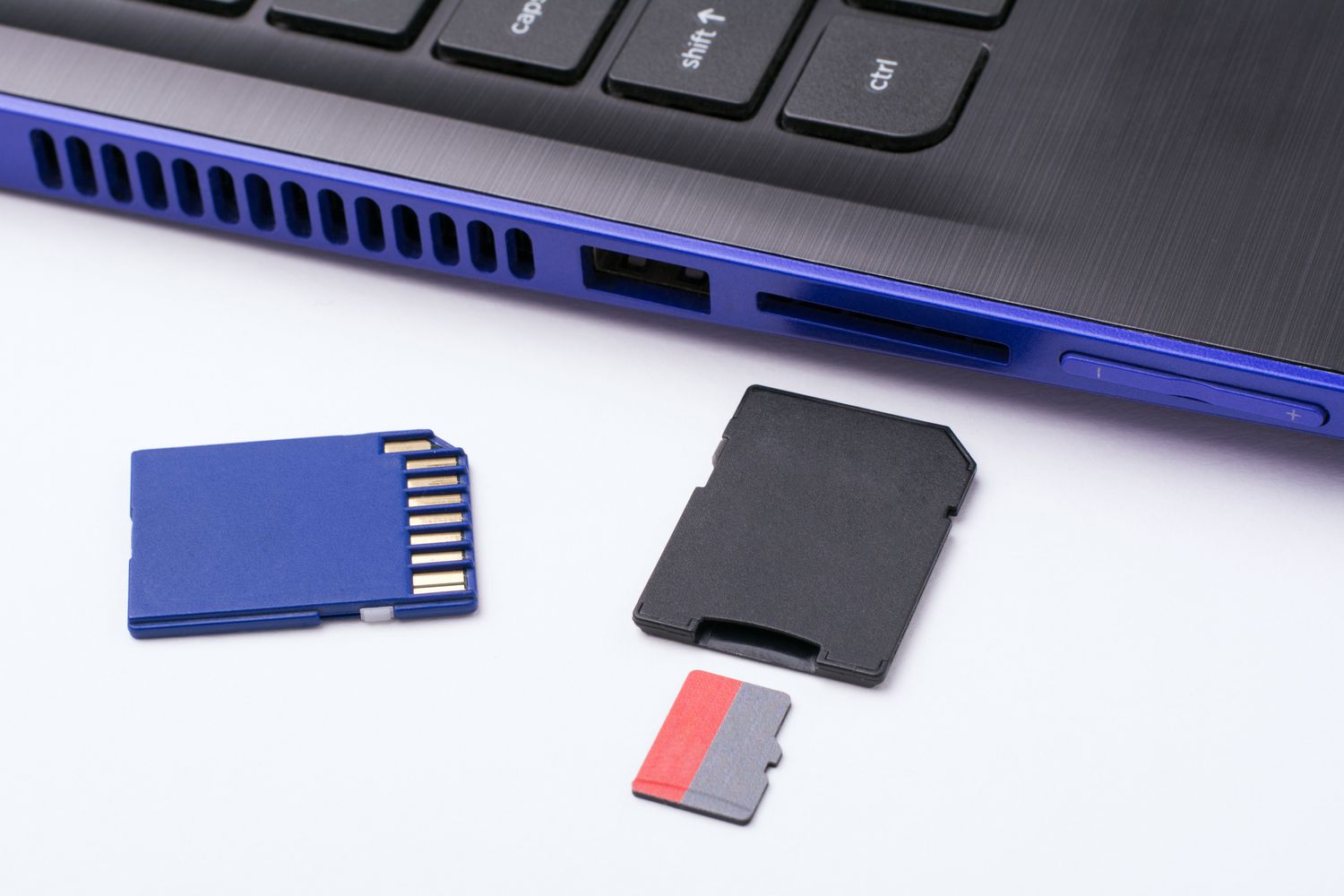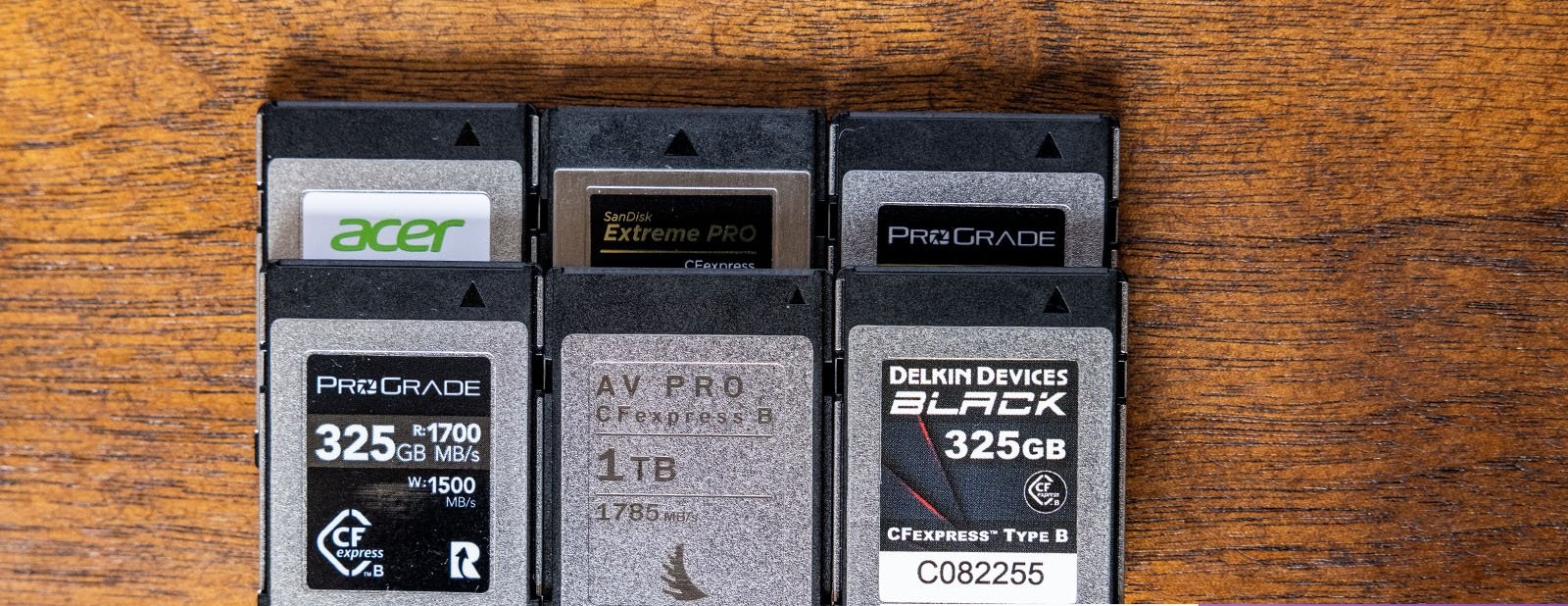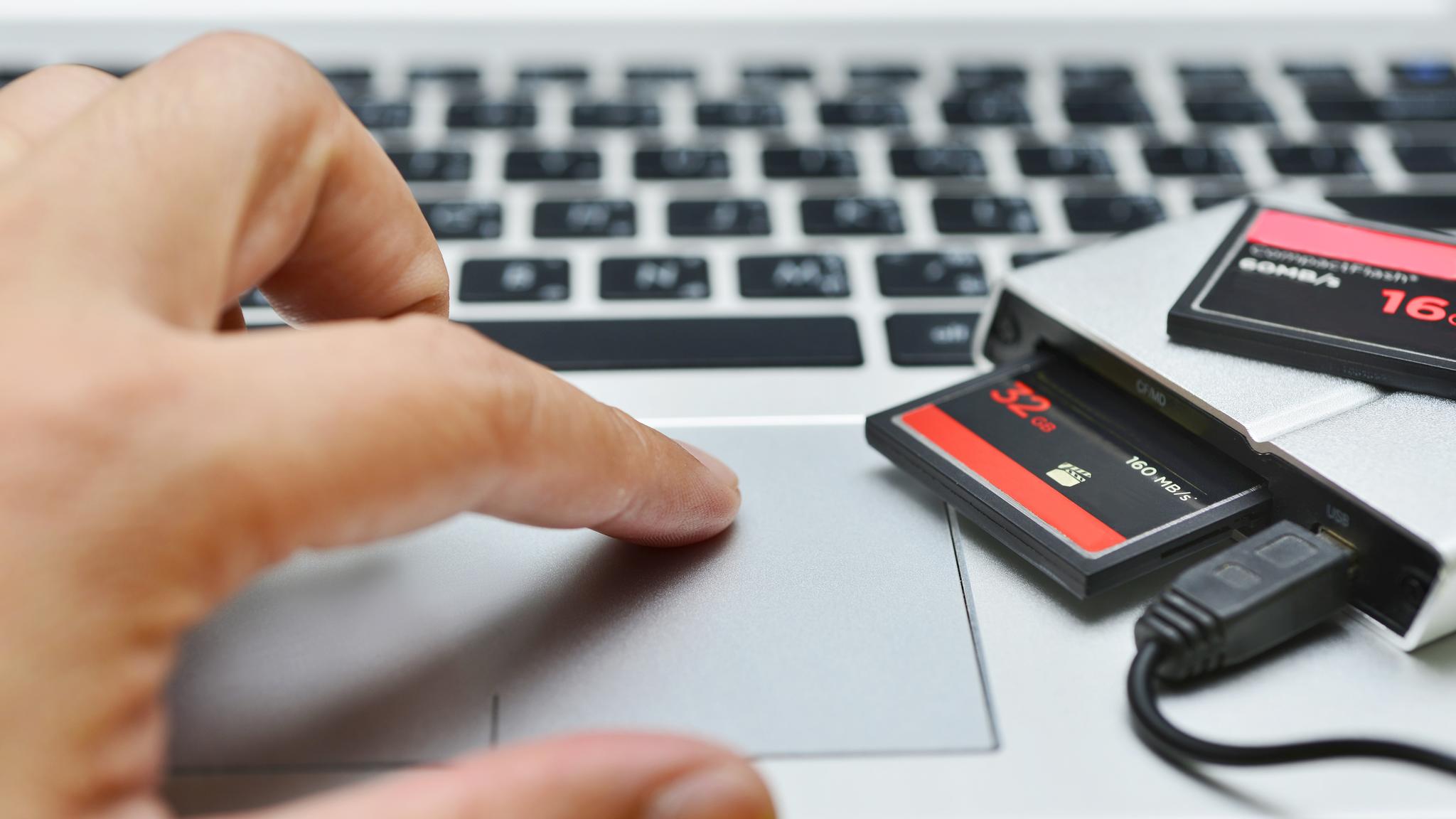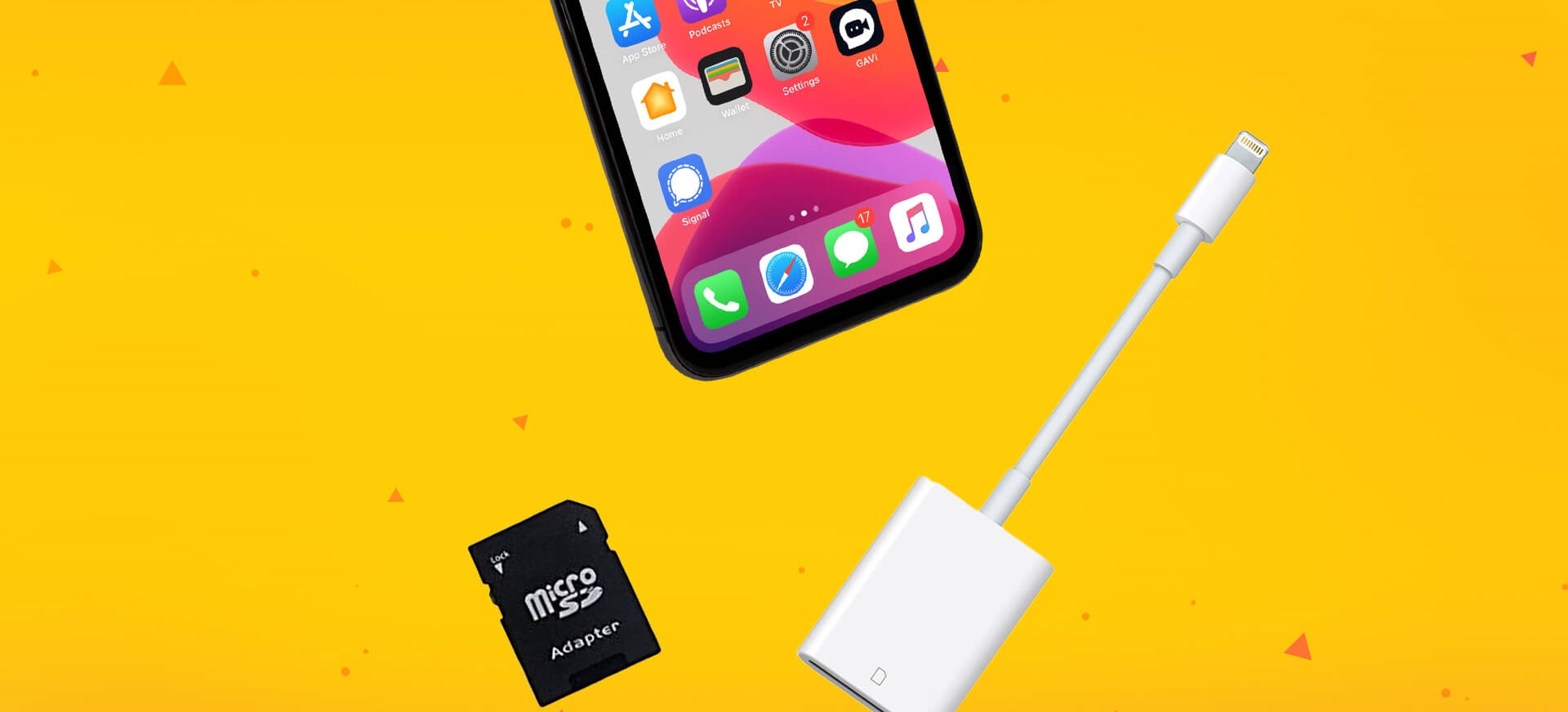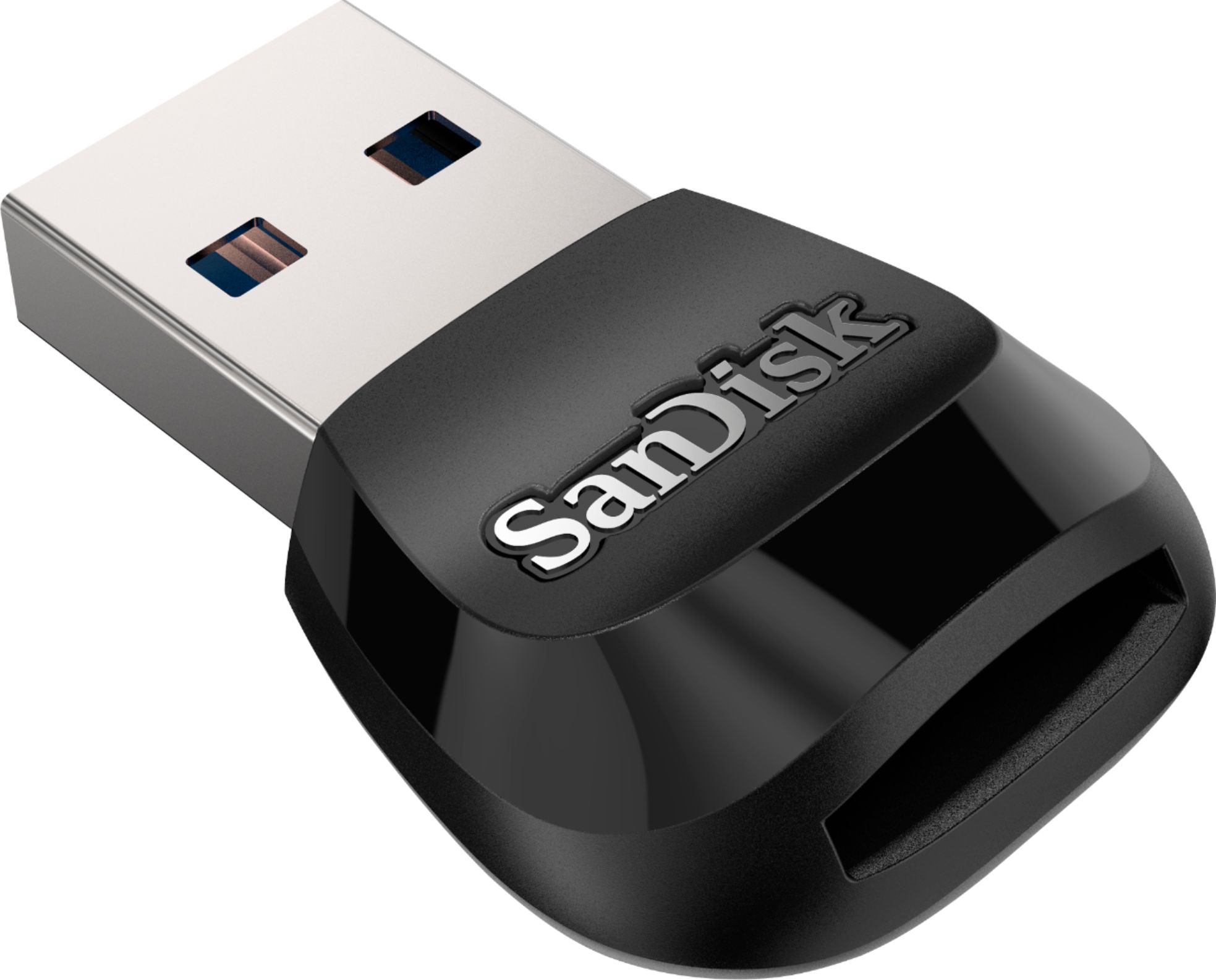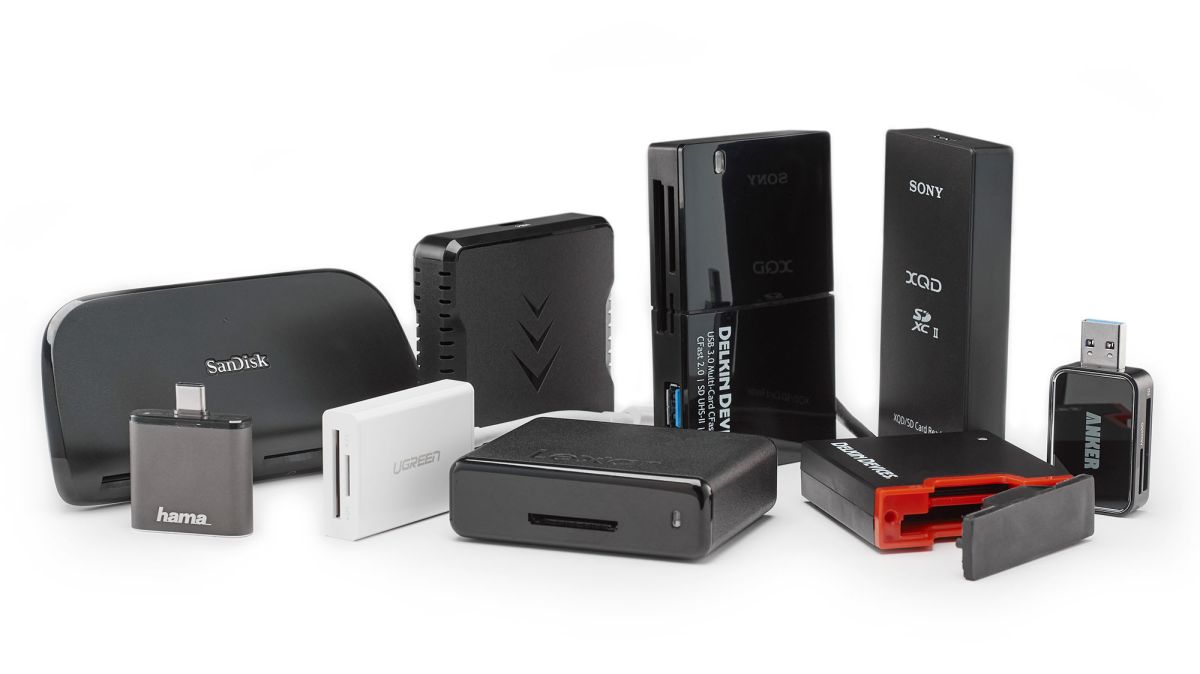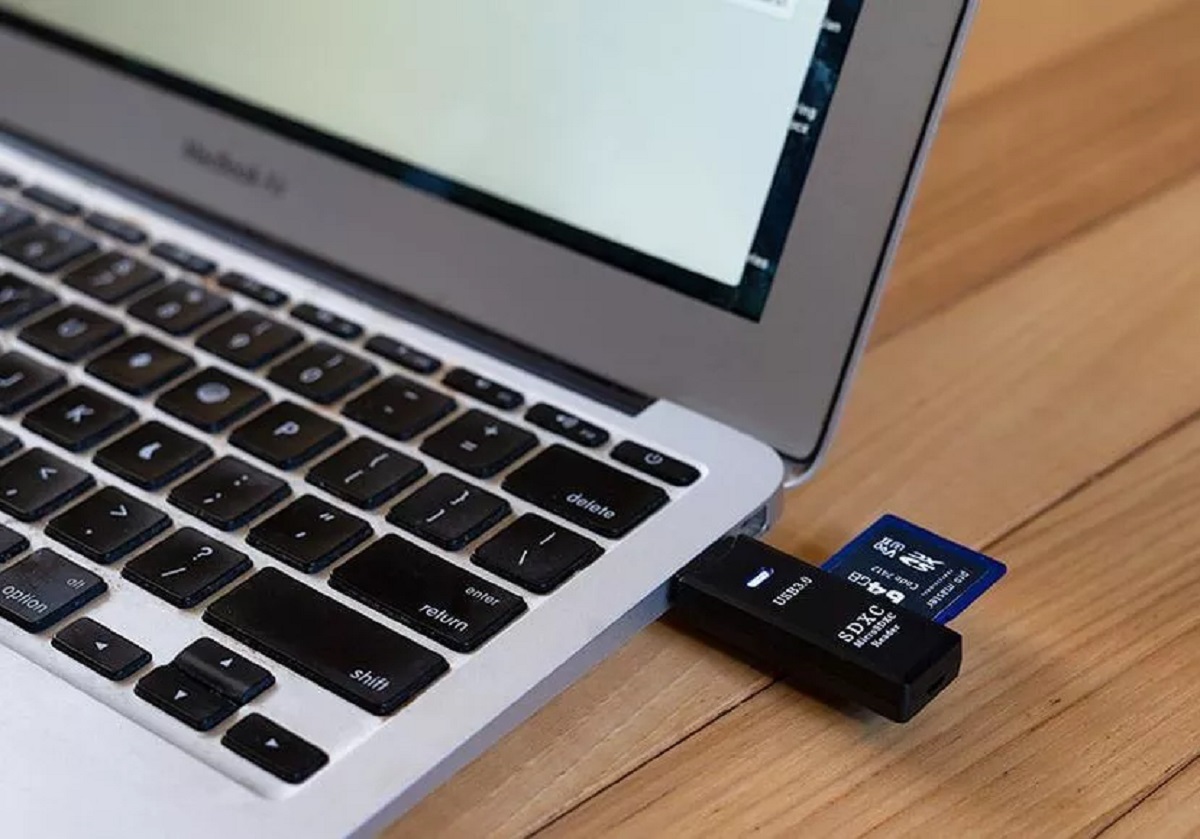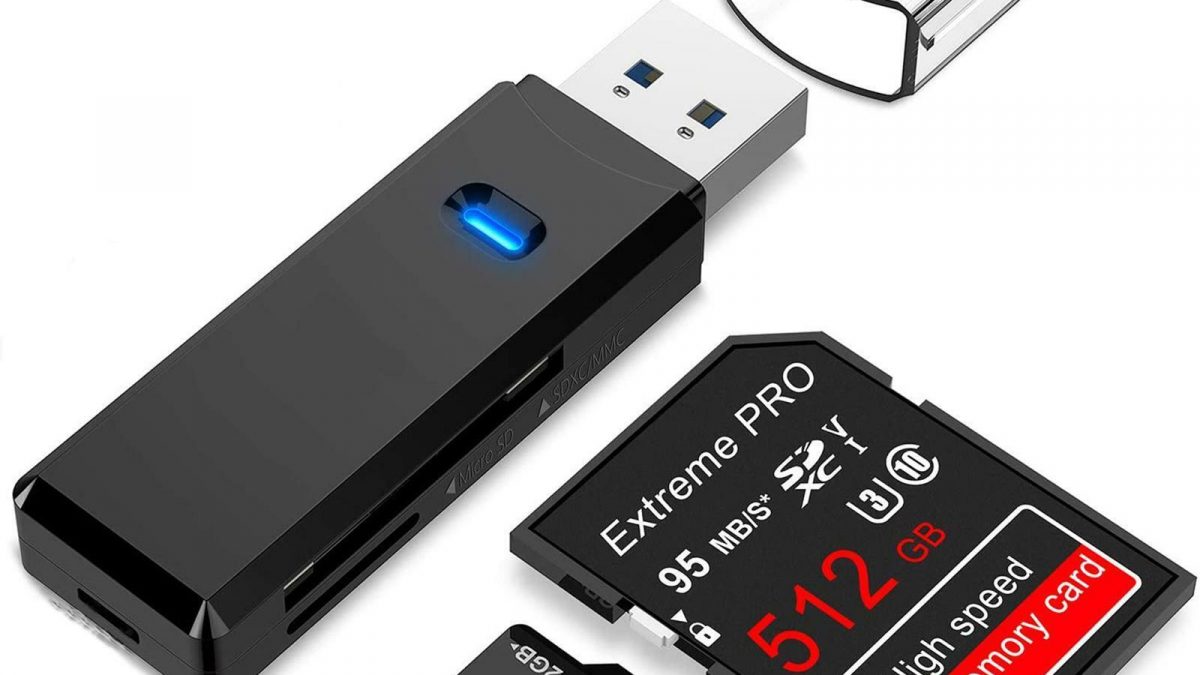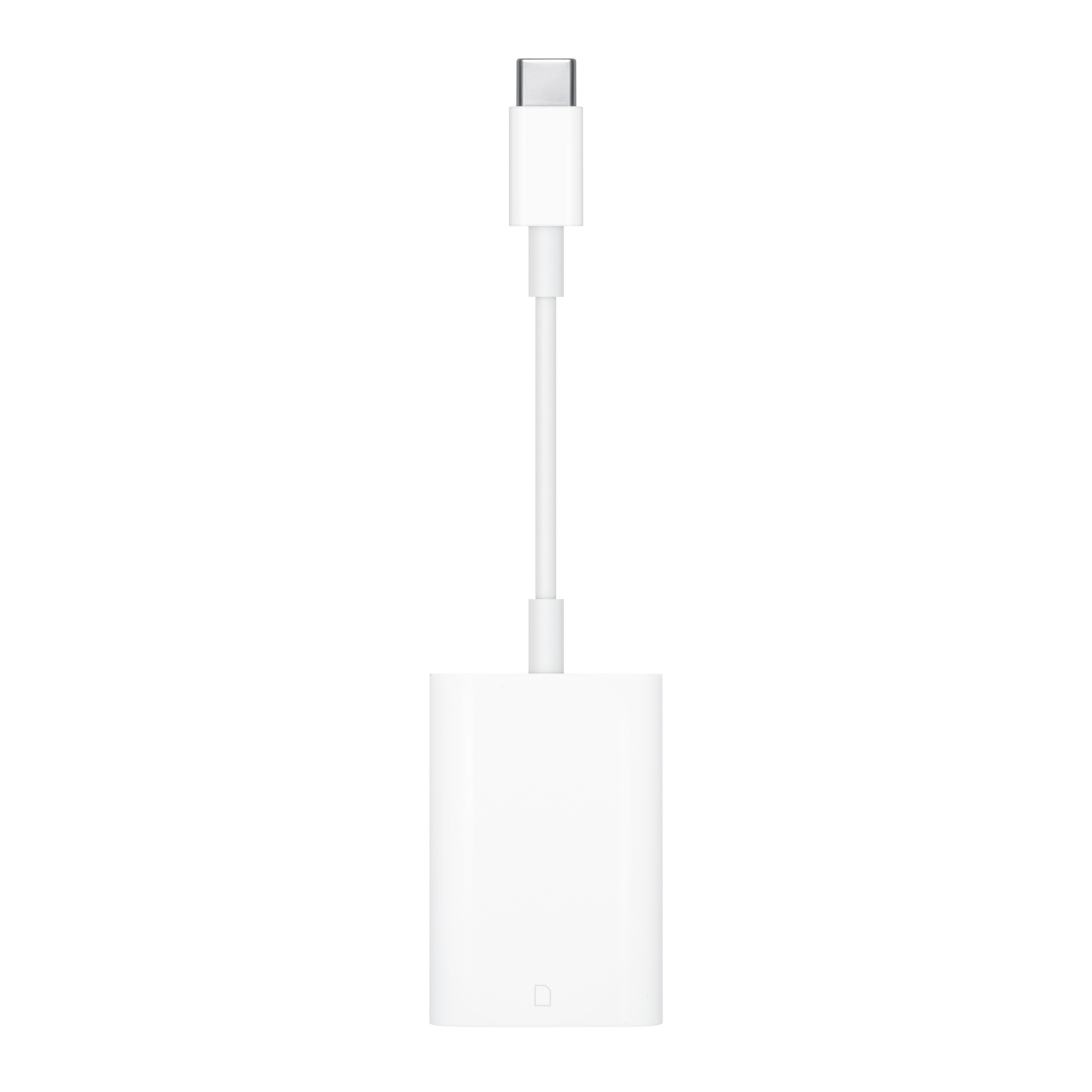Introduction
Welcome to the world of SD card readers! In this digital age, where our lives are increasingly filled with photos, videos, and documents, having a reliable and efficient way to transfer and access data is essential. SD card readers provide a convenient solution for individuals who want to expand the storage capacity of their devices or transfer files between devices seamlessly.
In this article, we will explore the various types of SD card readers available, how to use them with compatible devices, and the steps involved in accessing and transferring files. Whether you’re a professional photographer, a student looking to backup your important files, or simply an avid digital media consumer, understanding how to use an SD card reader will undoubtedly enhance your digital experience.
But before we dive into the nitty-gritty details, let’s take a moment to understand what SD card readers are and how they work. An SD card reader is a device that allows you to connect an SD (Secure Digital) card to another device, typically a computer, laptop, tablet, or smartphone, which doesn’t have a built-in SD card slot. These readers provide a bridge between your devices and the SD card, allowing you to access and manage the files stored on it.
SD card readers come in various shapes and sizes, and they can be categorized into different types based on their connection interfaces. The most common types include USB, Micro USB, Lightning, and USB-C card readers. The choice of the reader will depend on the compatibility with your device’s port.
In the following sections, we will guide you through the steps involved in using an SD card reader effectively. So, let’s get started!
Types of SD Card Readers
SD card readers come in a variety of types, each designed to be compatible with different devices and connection interfaces. Understanding the different types will help you choose the right SD card reader for your specific needs. Here are the most common types:
1. USB SD Card Readers: These readers connect to your device via a USB port, making them compatible with most computers and laptops. USB card readers are easy to use and typically offer high-speed data transfer rates. They often have a slot that supports multiple SD card formats, including SDHC and SDXC.
2. Micro USB SD Card Readers: Micro USB card readers are designed for smartphones and tablets that have a micro USB port. They are compact and portable, making it convenient to expand the storage capacity of your mobile device. These readers often include a built-in OTG (On-The-Go) feature, allowing you to directly access and manage files on the SD card without transferring them to your device.
3. Lightning SD Card Readers: These card readers are specifically designed for Apple devices, such as iPhones and iPads, which have a Lightning connector. Lightning card readers allow you to easily transfer photos and other files from your SD card to your Apple device. Some models even support simultaneous charging while transferring data.
4. USB-C SD Card Readers: With the increasing popularity of USB-C ports on modern laptops, tablets, and smartphones, USB-C card readers have emerged as a popular choice. These readers offer fast data transfer speeds and are compatible with devices that have a USB-C port. They provide a simple and efficient way to transfer files between your SD card and USB-C enabled devices.
When choosing an SD card reader, consider the compatibility with your devices and the type of SD card you use. Additionally, it’s important to check the maximum supported capacity of the card reader, as some older models may not support larger SDXC cards.
Now that you know the different types of SD card readers available in the market, let’s move on to the next section where we will explore how to insert an SD card into the reader and connect it to your device.
Compatible Devices
SD card readers are versatile devices that can be used with a wide range of devices, including computers, laptops, tablets, and smartphones. Understanding the compatible devices will help you determine if a particular SD card reader is suitable for your needs. Here are the common compatible devices:
1. Computers and Laptops: Most SD card readers are designed to be compatible with both Windows and Mac computers. These readers can be connected to the USB ports of your computer or laptop, allowing you to access and transfer files from the SD card directly. They are a popular choice for photographers and videographers who want to transfer large media files to their computers for editing or storage.
2. Tablets: Tablets, such as iPads and Android tablets, often lack an SD card slot. However, you can easily connect an SD card reader to the tablet’s USB or Lightning port using an appropriate adapter or compatible card reader. This allows you to expand the storage capacity of your tablet and access files stored on the SD card.
3. Smartphones: Many smartphones, especially Android devices, support external storage expansion through SD cards. By using a micro USB or USB-C SD card reader, you can connect an SD card to your smartphone and access files on the go. This is particularly useful for storing and transferring large amounts of media files or backing up important data.
4. Cameras and Camcorders: Most digital cameras and camcorders support SD cards as a primary storage medium. If your camera or camcorder does not have built-in Wi-Fi or other wireless transfer options, using an SD card reader becomes essential. By connecting the reader to your computer or laptop, you can easily transfer photos and videos from the camera’s SD card to your device for editing or archival purposes.
Before purchasing an SD card reader, it’s important to check the compatibility with your specific device. Make sure to verify the type of connection interface required (USB, Micro USB, Lightning, USB-C) and ensure that your device supports external storage expansion or has the necessary ports.
Now that you know which devices are compatible with SD card readers, let’s move forward and learn how to insert an SD card into the reader and connect it to your device.
Inserting an SD Card into the Reader
Inserting an SD card into the reader is a straightforward process. Here are the steps to follow:
- Ensure that your SD card is formatted properly and free from any physical damage.
- Locate the SD card slot on your SD card reader. It is usually a small rectangular opening on the front or side of the reader.
- Gently insert the SD card into the slot, ensuring that the metal contacts on the card align with the pins in the slot.
- Push the card in until you feel resistance or until it clicks into place, depending on the type of reader you have. Make sure the card is inserted fully and securely.
- Avoid applying excessive force or inserting the card in the wrong orientation, as this can damage both the card and the reader.
Once the SD card is inserted into the reader, you are ready to connect it to your compatible device.
It’s worth noting that some SD card readers may come with a protective cover or cap to keep the card slot clean and protected when not in use. Make sure to remove any covers or caps before inserting the SD card. Additionally, some card readers may have multiple slots for different types of cards. Ensure that you insert the SD card into the correct slot.
Now that you know how to insert an SD card into the reader, let’s move on to the next section where we will discuss how to connect the reader to your device.
Connecting the Reader to Your Device
After inserting the SD card into the reader, the next step is to connect the reader to your compatible device. The process will depend on the type of SD card reader and the ports available on your device. Here’s how to connect the reader to your device:
- USB SD Card Reader: If you are using a USB card reader, simply plug the USB connector into an available USB port on your computer, laptop, or compatible device. The operating system should automatically recognize the reader and mount the SD card, making it ready to use.
- Micro USB or USB-C SD Card Reader: For smartphones and tablets with a micro USB or USB-C port, you will need an appropriate adapter or a reader specifically designed for these ports. Connect one end of the adapter or card reader to your device’s micro USB or USB-C port, and the other end to the SD card reader. Once connected, your device should recognize the SD card and allow you to access its files.
- Lightning SD Card Reader: If you are using an SD card reader with a Lightning connector, it is designed specifically for Apple devices. Plug the Lightning connector into the appropriate port on your iPhone or iPad. If prompted, grant permission to access the device. The SD card reader should be detected, and the files on the SD card will be accessible on your Apple device.
Remember to ensure a secure connection between the reader and your device. Make sure the connectors are properly aligned and fully inserted into the ports to avoid any data transfer issues. It’s also important to note that some devices may require additional software or apps to be installed for seamless file transfer and management.
Once the reader is connected to your device, you can start accessing and managing the files stored on the SD card.
Now that we have covered how to connect the reader to your device, let’s move on to the next section where we will explore how to access the files on the SD card.
Accessing SD Card Files
Once the SD card reader is connected to your device, accessing the files stored on the SD card is typically a straightforward process. Here’s how you can access the SD card files:
- For Computers and Laptops: When you connect the SD card reader to your computer or laptop, the operating system should detect the SD card and automatically mount it as a removable storage device. A window or an icon representing the SD card should appear on your desktop or in the file explorer. Simply double-click on the icon or window to open it, and you will have access to the files and folders on the SD card.
- For Smartphones and Tablets: On your smartphone or tablet, after connecting the SD card reader, you can access the files in different ways. Some devices may automatically open a file manager app showing the contents of the SD card. Alternatively, you can manually open the file manager app on your device and look for the external storage option, which represents the SD card. Tap on it to view and navigate through the files and folders stored on the SD card.
Once you have accessed the SD card files, you can perform various actions, such as copying, moving, renaming, deleting, or opening the files. You can organize the files into folders, sort them by different criteria, and perform other file management tasks depending on your device’s capabilities and the available apps.
It’s important to note that the process might vary slightly depending on the operating system and device you are using. However, the general principle remains the same: connecting the SD card reader allows your device to recognize and access the files on the SD card.
Now that you know how to access the files on the SD card, let’s move on to the next section where we will explore how to transfer files to and from the SD card.
Transferring Files to and from the SD Card
Transferring files to and from the SD card is a fundamental functionality of an SD card reader. Whether you want to backup important files, free up space on your device, or share files between devices, here’s how you can transfer files to and from the SD card:
- From Device to SD Card: To transfer files from your device to the SD card, follow these steps:
- Open the file manager or file explorer app on your device.
- Navigate to the location of the file or folder you want to transfer.
- Long-press or right-click on the file/folder to select it.
- Look for the option to copy, move, or export the selected file/folder.
- Choose the SD card or its designated location as the destination for the transfer.
- Wait for the transfer process to complete, and the file/folder will be saved on the SD card.
- From SD Card to Device: To transfer files from the SD card to your device, follow these steps:
- Open the file manager or file explorer app on your device.
- Navigate to the location of the SD card files.
- Long-press or right-click on the file/folder you want to transfer.
- Select the option to copy or move the selected file/folder.
- Navigate to the destination location on your device.
- Paste the file/folder to complete the transfer.
It’s important to note that the specific steps and options may vary depending on the file manager app and the operating system you are using. Some devices may also offer simplified drag-and-drop functionality for easy file transfer.
By transferring files to and from the SD card, you can easily manage and organize your data, free up valuable storage space on your device, and have a backup of your important files.
Now that you know how to transfer files to and from the SD card, let’s move on to the next section where we will explore how to safely remove the SD card from the reader.
Removing the SD Card Safely
Properly removing the SD card from the reader is crucial to avoid data corruption or physical damage to the card. Here are the steps to safely remove the SD card:
- Make sure you have finished any file transfers or operations involving the SD card. Ensure that all file transfers are complete and that no applications or processes are accessing the SD card.
- On your device, locate the option to eject or safely remove the SD card. This can typically be found in the file manager or in the system tray/notification area.
- Click on the eject or remove option, and wait for a confirmation message before proceeding.
- Once you receive the confirmation message, gently push the SD card out of the reader slot. The card should spring out slightly, allowing you to remove it easily.
- Avoid pulling the card forcefully or abruptly, as this can damage both the card and the reader. Be gentle and patient while removing the card.
It’s important to note that failing to safely remove the SD card can lead to data loss or corruption. Removing the card while it is still being accessed by a process or while file transfers are in progress can result in incomplete transfers or damaged files.
Additionally, it’s advisable to store the SD card in a protective case or sleeve when it is not in use. This helps to prevent physical damage, such as scratches or bending, and protects the card from dust or moisture.
By following these steps, you can ensure that your SD card is safely removed from the reader, reducing the risk of data loss or damage.
Now that you know how to safely remove the SD card, let’s move on to the next section where we will discuss troubleshooting common issues you may encounter when using an SD card reader.
Troubleshooting Common Issues
While using an SD card reader, you may encounter some common issues. Here are a few troubleshooting tips to help resolve these issues:
1. SD Card Not Recognized: If your device does not recognize the SD card when it’s inserted into the reader, try the following:
- Ensure that the SD card is properly inserted into the reader.
- Check if the SD card is compatible with the reader and your device.
- Clean the metal contacts on the SD card with a soft cloth to remove any dirt or dust.
- Restart your device and try again.
2. Slow Data Transfer: If you encounter slow data transfer speeds, consider the following:
- Use a USB port that supports high-speed data transfer.
- Check for any background processes or applications that may be accessing the SD card concurrently. Close unnecessary applications to free up resources.
- Ensure that you are using a high-quality SD card reader that supports fast data transfer rates.
- If using a USB hub, connect the reader directly to a USB port on your device, as the hub may affect the transfer speed.
3. File System Compatibility: Some SD cards may use file systems that are not compatible with certain devices. In such cases, try formatting the SD card to a compatible file system, such as FAT32 or exFAT, to ensure it can be read by your device.
4. Error Messages: If you encounter error messages when accessing the SD card, try the following:
- Restart your device and try accessing the card again.
- Scan the SD card for errors using appropriate software or tools.
- If possible, test the SD card with another reader or device to identify if the issue lies with the card or the reader.
- If the error persists, consider backing up your data and formatting the SD card.
If none of the troubleshooting steps resolve the issue, it is recommended to consult the documentation or contact the manufacturer of your SD card reader or device for further assistance.
Now that you are armed with troubleshooting tips, you are better equipped to handle any common issues that may arise while using an SD card reader.
With that, we have covered the main aspects of using an SD card reader effectively and troubleshooting common issues. We hope this guide has been helpful in enhancing your understanding of SD card reader usage.
Conclusion
Using an SD card reader provides a convenient and efficient way to expand storage capacity, transfer files easily, and access data on various devices. Whether you are a professional photographer, a student, or a digital media enthusiast, understanding how to use an SD card reader is essential in today’s data-driven world.
In this article, we explored the different types of SD card readers and their compatibility with various devices. We learned how to insert an SD card into the reader and connect it to a compatible device. Additionally, we discussed the process of accessing the files on the SD card and transferring files to and from the SD card.
We also covered the importance of safely removing the SD card from the reader to avoid data corruption or physical damage. Lastly, we provided troubleshooting tips to help resolve common issues that may arise while using an SD card reader.
By following the steps and tips outlined in this guide, you can make the most out of your SD card reader and enhance your digital experience. Whether you need to backup files, transfer media, or expand storage, an SD card reader is a versatile tool that simplifies data management and file sharing.
Remember to choose a reader that is compatible with your device’s ports and SD card formats, and handle the SD card with care to ensure its longevity. Enjoy the benefits of easy file transfers, increased storage capacity, and seamless accessibility with your SD card reader.
We hope that this guide has been informative and helpful, enabling you to harness the full potential of your SD card reader.







